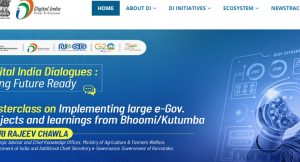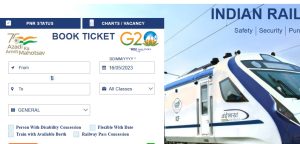Krispin Joseph PX
Can anyone imagine a social life without websites and apps? We rely on websites and apps with many motives in our daily life; ticket-food-material booking, bank payments, and other government offer and applications are entirely online-based. We depend upon both private and government websites and apps. The last two decades have been significant in e-commerce, and most of the government offers are now online; our life is more digital: a mobile number manage once identified as a user of digital service and a citizen of the state. Does anyone now get government service without an Aadhaar and a linked mobile number?
Our identity is merged with a mobile-Aadhaar number that helps us navigate a complex digital society. At the beginning of the 21st century, in India, the E-commerce revolution had yet to start and established many government services through the website. For railway ticket booking (one of India’s most used government web services), IRCTC began their services in 1999. Since the beginning of the 21st century, mobile services have started to give internet, and smartphones are slowly becoming common in Indian social life.
India is now ‘Digital India’; everything available in digital rooms and websites are for services, business, social and cultural activities, and transactions. According to the data, India is one of the biggest and fastest-growing markets for digital clients, with 560 million internet subscribers in 2018. The Government of India has enlisted over 1.2 billion Indians in its biometric digital identity programme, Aadhaar. More than 40% of the total population has internet connectivity and subscription. Digital India is a future brand, and the government and private sectors are focusing on promoting that brand for business and official goals.
When we drink tea in the remotest village, they offer a Phone pay or a digital payment facility to pay your tea bill; that means we are digitalised society or system. Then the question arises: Are we designing our aesthetics in this digital space? Every single element of the surroundings is designed or constructed upon a design. We use websites or apps not naturally developed as part of nature but designed and coded by humans through their aesthetical sense.

Credit: Digital India
Philosopher Wittgenstein writes, ‘The aspects of things that are most important for us are hidden because of their simplicity and familiarity, quoted by Jane Forsey in the book, ‘The Aesthetics of Design’. The primary element of the website is to give a space for the people who intend to explore what is happening here and there, book something, send a message, or look for information. A website is a public digital space provided by the government or private entities which offer a service or something else. If we look into the design aspect of the website, one can analyse the aesthetics of Design; is that website designed by the government or private, corporate or local business?
Our surrounding life and nature are well designed, and from the market and bridge, road and buildings to everything we use daily are created. We live in a designed world, and everything we use in our life is a part of this designed world that was created in a time being, and aesthetics is also a matter. Design is considered a primary human characteristic, so aesthetics is the primary thing. In the book ‘Design: A Very Short Introduction, Scholar of Design John Heskett writes, ‘Design is the most curious feature of the modern world, and Design should be the crucial anvil on which the human environment, in all its detail, is shaped and constructed for the betterment and delight of all. Design is essential for humans, and aesthetics is significant for Design. Without an aesthetical sensibility, there is no design.
Usually, every element of social life is considered or treated as a designed world. Our home tells about us, and our dress is also a sign; almost all the materials we use tell everything about us. Home is not only for living space but an architectural form displayed in public space that symbolically represents the owner’s wealth and social status. This logic is apparent in the case of any design and structure. If we look at the government websites in India from this perspective, how can we analyse the aesthetics and Design?

Credit: IRCTC
Are any of the public services provide websites, or the government websites are good in a design sense? Are India’s most used public websites, like IRCTC or other web platforms, visually pleasing? If they do not look good, why? Through IRCTC, the government allows us to book tickets online for train and flight journeys. Most of the time, IRCTC is down, and most of the time, they claim, the server is in a manageable condition. These discussions about the efficiency of IRCTC are related to the server capacity, not to Design aspects. No one talks about the Design aspect of the government’s websites, and no one expects anything like beauty or visually pleasing elements from government websites. The pension fund, Aadhaar card, Irctc, BSNL or even the digital India websites need to be better in Design, and they provide the services that empower people.
Two elements are invisible in websites; one is the utility of the sites; for what objective they are bearing in the social context. Second Who is the owner? Anyone can recognise government websites without any clue, from the dull Design to loading time and unwelcoming navigation tools and hyperlinks. Compared with corporate web platforms, ordinary people also use government websites, so authorities should have aware of this. If we check with IRCTC, we know they kept huge information on one page. That information is essential for those who rely on that website. The government website’s aesthetics may not relate to the site’s design aspect but to the information and services that the web platform provides. Aesthetics is not only a visual experience; we can experience it differently.
Why our government aesthetics could be more exciting and better in Design? Even though the worst site exists, creating websites with a Design is only possible. Then, why is it that Design needs to be more accommodating to people and has become more visually appealing? Our government is reflected, and their mindset toward the people is reflected in and through these websites and the services provided through that platforms. The government’s aesthetics is echoed in the polished corner of the city centres and the Central Vista project, and through ‘these web platforms’. Most people are experiencing their government through this dull looking- loading problem websites, and they are not angry with the system because they know this is the only system government provides them.
A system is a complex idea that combines many complicated things and provides many demanding things in a narrow window of web and apps. These websites are the tools for the governments to give services to the people; they need to be made aware of the platforms and aware of the assistance given to that platforms.
What is aesthetics, then? Is that aesthetic an experience of visuals or the experience itself?

Krispin Joseph PX, a poet and journalist, completed an MFA in art history and visual studies at the University of Hyderabad.





